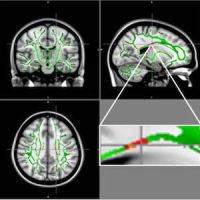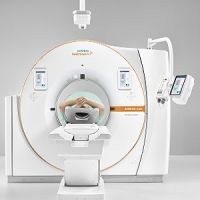Alzheimer’s disease (AD) is difficult to detect primarily because of the lack of measurable indicators – or biomarkers – before patients exhibit symptoms of this form of dementia. However, damage to the brain occurs years before AD is already symptomatic and advanced.
New research from the University of Minnesota has looked into a promising retinal biomarker using a hyperspectral imaging technique for early detection of AD. Through this imaging technique, researchers were able to characterise light-scatter changes in the retinas of Alzheimer’s patients compared to healthy individuals.
The eye’s retina is considered the developmental extension of the brain and can be accessed non-invasively. Previous studies have shown structural changes in the retina of AD patients that include thinning of the retinal nerve-fibre layer and changes in retinal vasculature. However, such changes do not manifest in early stages of the disease nor are they specific biomarkers for AD.
You May Also Like: Faster Diagnosis of Eye Diseases with AI, Machine Learning
.
In the current study, researchers employed the retinal hyperspectral imaging (rHSI) technique to detect biochemical changes present at the early stages of Alzheimer’s disease. This method scans a patient’s eye to detect small quantities of a protein long before they collect in large enough clusters to form plaques in the brain – a biological sign of AD progression. This non-invasive test is performed in less than 10 minutes.
In this study, 19 AD patients who had memory scores ranging from mild cognitive impairment (MCI) to advanced Alzheimer’s disease were scanned and compared to healthy participants of the same age. Light scatter changes were recorded from the patients’ different retinal areas (eg, optic disc, nerve-fibre layer of the peripapillary retina, perifoveal retina and the central retina) using a specialised camera attached to a custom designed spectral imaging system.
Results show the highest detectable light signal was obtained in the MCI cohort when compared to the advanced AD patients. Notably, the rHSI signature observed is unaffected by eye pathologies such as glaucoma and cataract. In addition, age of the subjects minimally influenced the spectral signatures.
“The preliminary results from this study are promising and have laid the foundation for next steps involving rigorous validation of the technique in a clinical setting,” said Swati More, an associate professor in the Center for Drug Design, College of Pharmacy.
The rHSI technique, according to the research team, could be particularly useful in identifying high-risk individuals for Alzheimer’s disease by starting periodic retinal screening at an early age.
“While Alzheimer’s disease cannot yet be treated with the intent to cure, early diagnosis with retinal screening can facilitate interventions with available therapeutics,” said Robert Vince, director of the Center for Drug Design. “This could add years of productive, quality time to the patient’s lifespan.
Source: University of Minnesota
Image: iStock
reference
More SS, Vince R et al. (2019) In Vivo Assessment of Retinal Biomarkers by Hyperspectral Imaging: Early Detection of Alzheimer’s Disease. ACS Chem. Neurosci. Published online 24 October 2019. https://doi.org/10.1021/



























